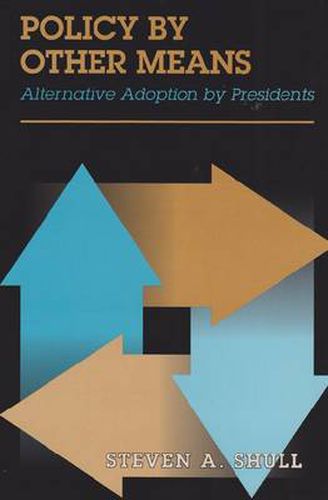Readings Newsletter
Become a Readings Member to make your shopping experience even easier.
Sign in or sign up for free!
You’re not far away from qualifying for FREE standard shipping within Australia
You’ve qualified for FREE standard shipping within Australia
The cart is loading…






Under the U.S. Constitution, Congress bears responsibility for establishing national policy through legislation, but in recent years that power has often been eclipsed by presidents adopting public policy by other means. Steven A. Shull offers a systematic study of the relative importance of four tools presidents use to create policy without going through Congress: budgeting, executive orders, executive agreements, and commitment of troops. Employing both statistical analyses of recent presidents’ use of alternative policy means and case studies of each tool, Shull investigates the factors that affect whether and when the chief executive becomes, in effect, the chief policy maker, budgeter, or diplomat. He examines individual, institutional, and environmental variables, as well as several controls that may influence the choice of unilateral or alternative policy actions. Shull’s quantitative analyses help to illustrate not only trends over time in the independent actions of presidents but also the complexity of the factors that influence those trends. Scholars of the presidency, of executive-legislative relations, and of public policy will gain important insight into presidential power from Shull’s careful analysis of unilateral and other alternative policy adoption.
$9.00 standard shipping within Australia
FREE standard shipping within Australia for orders over $100.00
Express & International shipping calculated at checkout
Under the U.S. Constitution, Congress bears responsibility for establishing national policy through legislation, but in recent years that power has often been eclipsed by presidents adopting public policy by other means. Steven A. Shull offers a systematic study of the relative importance of four tools presidents use to create policy without going through Congress: budgeting, executive orders, executive agreements, and commitment of troops. Employing both statistical analyses of recent presidents’ use of alternative policy means and case studies of each tool, Shull investigates the factors that affect whether and when the chief executive becomes, in effect, the chief policy maker, budgeter, or diplomat. He examines individual, institutional, and environmental variables, as well as several controls that may influence the choice of unilateral or alternative policy actions. Shull’s quantitative analyses help to illustrate not only trends over time in the independent actions of presidents but also the complexity of the factors that influence those trends. Scholars of the presidency, of executive-legislative relations, and of public policy will gain important insight into presidential power from Shull’s careful analysis of unilateral and other alternative policy adoption.